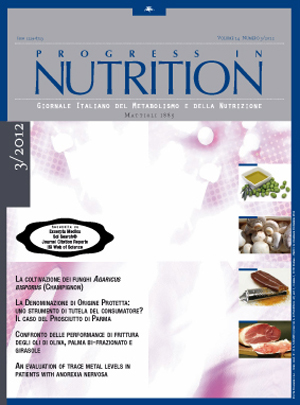Comparative in vitro study on free radical scavenging potential of selected bivalve species
Keywords:
Bivalve, free radical, in vitro, antioxidant, Bivalvi, radicali liberi, antiossidanteAbstract
Bivalves such as, Crassostrea spp., Meretrix casta, Placuna placenta and Polymesoda erosa are largely consumed as edible seafood. It forms natural source of nutrition in coastal and worldwide population. Free radical scavenging activities of these species were tested against 2, 2–diphenyl–1–picryl–hydrazyl (DPPH), hydroxyl radical (·OH), reducing power and in vitro inhibition of lipid peroxidation (LPX). Methanolic extracts exhibited dose dependency with increasing concentration (3 to 9 mg/ml) of sample. On comparing DPPH activities, M. casta and P. placenta statistically exhibited significant radical scavenging properties (p<0.01). However, scavenging effect of Crassostrea spp. was higher irrespective of dose dependency. Stable hydroxyl scavenging effects and increasing reducing actions with increase in absorbance were also seen to be concentration dependant. Superior activities against in vitro induced LPX were observed in the order of P. placenta> M. casta> P. erosa > Crassostrea spp. This indicates protective role against deterioration cell membrane lipids during oxidative stress. Moreover, correlation of variables (p<0.001) in the present study, further supports our views on, M. casta and Crassostrea spp. as natural source of antioxidative seafood.Studio comparativo in vitro sulla potenziale attività di smaltimento dei radicali liberi di specie selezionate di bivalvi
Bivalves such as, Crassostrea spp., Meretrix casta, Placuna placenta and Polymesoda erosa are largely consumed as edible seafood. It forms natural source of nutrition in coastal and worldwide population. Free radical scavenging activities of these species were tested against 2, 2–diphenyl–1–picryl–hydrazyl (DPPH), hydroxyl radical (·OH), reducing power and in vitro inhibition of lipid peroxidation (LPX). Methanolic extracts exhibited dose dependency with increasing concentration (3 to 9 mg/ml) of sample. On comparing DPPH activities, M. casta and P. placenta statistically exhibited significant radical scavenging properties (p<0.01). However, scavenging effect of Crassostrea spp. was higher irrespective of dose dependency. Stable hydroxyl scavenging effects and increasing reducing actions with increase in absorbance were also seen to be concentration dependant. Superior activities against in vitro induced LPX were observed in the order of P. placenta> M. casta> P. erosa > Crassostrea spp. This indicates protective role against deterioration cell membrane lipids during oxidative stress. Moreover, correlation of variables (p<0.001) in the present study, further supports our views on, M. casta and Crassostrea spp. as natural source of antioxidative seafood.
Downloads
Published
Issue
Section
License
This is an Open Access article distributed under the terms of the Creative Commons Attribution License (https://creativecommons.org/licenses/by-nc/4.0) which permits unrestricted use, distribution, and reproduction in any medium, provided the original work is properly cited.
Transfer of Copyright and Permission to Reproduce Parts of Published Papers.
Authors retain the copyright for their published work. No formal permission will be required to reproduce parts (tables or illustrations) of published papers, provided the source is quoted appropriately and reproduction has no commercial intent. Reproductions with commercial intent will require written permission and payment of royalties.

This work is licensed under a Creative Commons Attribution-NonCommercial 4.0 International License.


